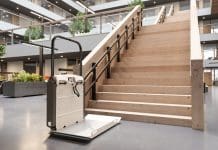Craig Tatton, chief operating officer at Tilbury Douglas, discusses the challenges higher education faces, and how the construction industry is developing solutions, including support to decarbonise estates and improve space utilisation whilst maximising student potential and experiences
The higher education sector continues to deal with the impact of the Covid-19 pandemic, and other challenges including inflation, energy prices and carbon reduction targets. However, it can collaborate with the built environment to address many of these challenges and ensure facilities are fit to meet new pedagogies, and space requirements, and increase student and staff expectations.
Higher education has had to adapt to flexible learning
The pandemic made its mark in many parts of our lives, including the higher education sector. It has had to adapt to an offering of hybrid learning, with a mix of in-person and virtual teaching. Space and learning requirements have subsequently changed and there is a focus on improving space utilisation, to support sustainability goals and financial stability.
So, what does this mean for its facilities? Moving forwards, institutions will need to use spaces more flexibly rather than large theatres that were designed to house several hundred students at once. Spaces will need to be adaptable, so learning can be dynamic, engaging and interactive, depending on the size of the group.
As institutions work their way through estate modernisation and upgrades, more flexible spaces will need to be incorporated to suit different groups and teaching methodologies. Smart campus technologies including sensors and connectivity are also ever more critical. With the requirement to be able to teach virtually, facilitate interaction and capture important usage data, this will also require upgrading and ongoing investment.
Greener, cleaner campuses
As with most sectors, there is a big focus on sustainability and a commitment to become carbon neutral. This is a major challenge for the higher education sector, as sustainability is front and centre for the Generation Z students, they are increasingly interested in building performances and green skills, taking this into consideration when deciding where to study. Many Universities also have a large number of different building types on campus, with up to 30% at the end of life. University estates and facilities teams are often custodians of listed buildings and can have a stock of large buildings which provide significant decarbonisation challenges and costs, as they work towards their zero carbon goals.
Net zero carbon is possibly the biggest challenge, as it’s not a bolt on. We are engaging early with the sector to develop optimum solutions, using our fabric first expertise and the experiences of our inhouse engineering team to provide retrofitting, renewables and heat network advice.
We have also used many lessons learnt from delivering zero carbon solutions developed on our Department for Education (DfE) framework. Our award-winning Engineering Heartspace project in Sheffield is a good example where we have repurposed two of the universities oldest listed buildings. We created a dynamic social and research collaboration space for students and staff, whilst improving the buildings’ energy efficiency and using modern construction methods to reduce our carbon footprint.
New builds make this easier to achieve by using innovative materials, products and greener construction techniques. For older estates, the need to retrofit is increasing and the ability to understand the value proposition of new greener construction technologies that can be deployed to existing buildings to make them greener and decarbonise will be key.
Experienced construction contractors can consult on the best use of capital investment across an estate, advising on refurbishment and new build options along with material, carbon, programme, life-cycle and modern methods of construction recommendations.
Student experience is a key factor when choosing an institution
Student and parent expectations are increasing. They demand more for their money, from low-carbon buildings to just-in-time catering, using digital collaboration tools and stakeholder engagement supports understanding specific requirements, as there isn’t an average student.
Our award-winning Red Kite View project in Leeds is a great example of early engagement and collaboration, and how we used innovative design to meet student expectations, reduce carbon and improve biodiversity – the project won the Education Estates Student Experience Award 2022.
Alongside green credentials, the student experience on offer is another important factor when choosing an institution. They will consider the non-academic facilities available to them, as attracting students becomes ever more competitive. This can include a range of spaces such as state-of-the-art sports facilities, public realm, medical centres and entertainment venues that improve the broader student experience and counter isolation and potential loneliness.
The residential accommodation available to students is also paramount in attracting students. With student numbers set to rise by 300,000 by the end of 2030 and shortages of quality student accommodation stock in many parts of the country, there is a need to invest. Our Mount Oswald Campus in Durham is an excellent example of developing a solution fit for the 21st century; it won both the Collaboration Award and University Halls of Residence of the Year Award at the Property Week Student Accommodation Awards.
The project provides high-quality accommodation with fantastic connectivity for the technology savvy Generation Z end users, with social facilities to support interaction and place making. Designed and constructed with ingenuity by using off-site and digital technologies to reduce operating and maintenance costs.
Digital twins are unlocking new potential
For the higher education sector to push forward with upgrading estates to become more sustainable, digitally advanced and offer a range of facilities, it needs to look to ways to adapt its buildings now.
The use of digital technology has grown exponentially in the construction industry in recent years. Virtual and augmented reality are becoming increasingly mainstream and should allow efficiencies and greater collaboration.
Over the last two years, we have invested more than £5m in R&D, in technology and digital processes to allow us to become a leading construction innovator. In October 2022, we launched our new Connect Configurator, which marks the next major milestone on this journey.
The Connect Configurator provides a web-based application for smarter and more efficient creation of concept designs using approved standardised layouts. The flexible platform can design whole buildings by placing individual rooms which include building components.
Using prefabricated models and the latest 3D technology, Connect Configurator allows for more detail and information to be created earlier in the project. This gives Tilbury Douglas’ clients data at their fingertips, so they can make informed data-driven decisions, including live cost, carbon and programme estimates. This is also very beneficial to support business cases and carbon reduction plans.
At an earlier stage, more detailed digital design information can now be accessed via a simple web portal enabling fast visualisation and cost planning, leading to quicker identification of the optimum solution with our clients.
In an environment of change where a partnership culture is required, this technology will create a digital twin that will assist with managing educational estates into the future.
Our innovative and forward-thinking approach was recognised by the Education Estates, having been named Contractor of the Year Award 2022.
Craig Tatton
Chief operating officer
Tilbury Douglas





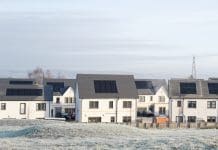
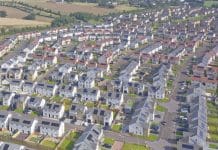
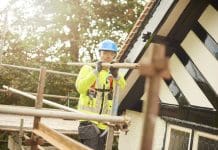


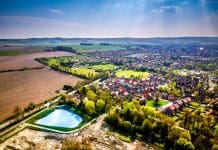


![[VIDEO] Shaping the future of safety at the RSMA Annual Conference & Dinner 2025 Discover insights and highlights from the talks at RSMA Annual Conference & Dinner 2025 in Kenilworth with the team at Re-flow](https://www.pbctoday.co.uk/news/wp-content/uploads/2025/02/Re-flow-Shaping-the-Future-of-Safety-Media-218x150.jpg)
